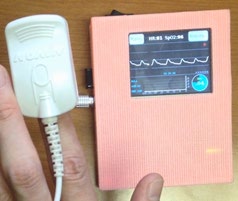Overview
Hemorrhage is the most common cause of preventable death on the battlefield and in civilian trauma care. Triaging patients that may have life-threatening bleeding in the field is essential for distinguishing those who need trauma center care, early control of bleeding, and blood transfusion. The UMB inventors developed the Bleeding Risk Index (BRI) prediction algorithm, a non-invasive method for continuous analysis of a critical patient’s status, which has been validated with data from the many trauma patients in daily care at the University of Maryland’s R Adams Cowley Shock Trauma Center. The BRI algorithm uses features of pulse oximeter photoplethysmograph (PPG) waveforms - alone or in combination with features from electrocardiograph (ECG) waveforms and other vital signs data - to determine in near real-time which patients need a blood transfusion. This technology can dramatically improve the early identification of occult or uncontrolled hemorrhage in both civilian and military trauma patients and can be readily implemented for use in hospital and pre-hospital emergency medical response services.

Applications
Rapid and effective performance of lifesaving interventions is needed to improve patient survival. However, the diagnosis of occult hemorrhage remains challenging, and patients with compensated shock may deceive clinicians until the moment of rapid decompensation is reached and irreversible shock ensues. Errors in decision making rather than in technical skill have been associated with two thirds of hemorrhagic deaths after injury. Performance of the BRI algorithm was tested in comparison to clinical judgment of expert trauma care providers, and was found to be more accurate for prediction of emergency transfusion (Mackenzie et al, 2015). The BRI algorithm may be readily integrated for use with existing patient monitoring systems to provide key clinical decision support data in emergency medical situations.
Advantages
Uses automated, continuous monitoring of routine vital signs data
Calculates prediction without user input, and continuously updates to reflect patient’s changing condition
Can be implemented in portable devices for military and pre-hospital decision support to enhance hospital preparedness for inbound trauma patients
The only predictive algorithm validated equal or better than decisions of clinical experts
Stage of Development
The BRI prediction algorithm has undergone rigorous clinical testing (with R&D funding from the US Armed Forces) using vital signs data collected in an active trauma care environment, including during helicopter transport of trauma patients, and it promises to be an important medical decision support tool for civilian and military applications.
Licensing Potential
Available for licensing
NC 11/07/22
Contact Info
Office of Technology Transfer
620 W Lexington St., 4th Floor
Baltimore, MD 21201
Email: [email protected]
Phone: (410) 706-2380